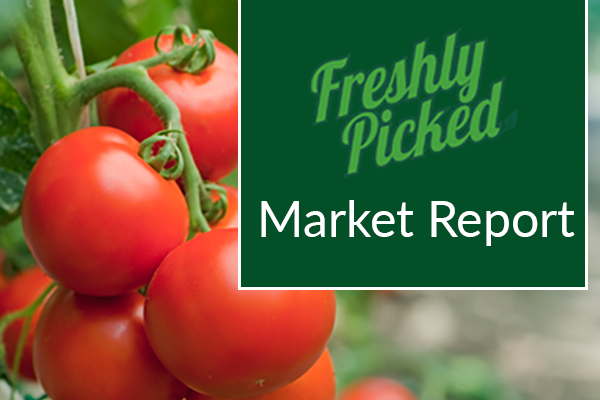Commodity forecasting highlights from CommodityONE
This snapshot report is released every week. To learn more about the FULL report, click here.
Designed to support purchasing and forecasting teams in managing price risks, CommodityONE provides powerful tools like commodity forecasting and item-specific food cost modeling to help you plan smarter and maximize profitability. Learn how you can receive even more in-depth insights delivered daily from CommodityONE to elevate your strategy.

Expert insights curated weekly.

Powered by CommodityONE
Freshly Picked Insights
- Stop Staring at Dashboards, Start Moving Margins
- The Hidden Bill Eating Your P&L
- The Operator’s Blueprint for Better Decisions
Produce

The produce markets steadied following several active weeks. Iceberg lettuce saw its first significant correction since September, falling 21% week-over-week to around $40 per carton. Other lettuce types held firm, while the tomato sector continued to underperform for the season, with large romas retreating modestly.
Outlook: Iceberg is likely nearing its seasonal high and could stabilize or drift lower through late November. Roma prices may continue to fluctuate in the $15–$20 range before softening in early 2026. Operators can expect more predictable pricing trends for leafy greens and tomatoes heading into winter menus.
Grains

The grains complex was mixed amid renewed volatility. Corn, soybeans, and both winter wheat types finished lower after optimism surrounding a U.S.–China trade truce cooled. China’s soybean purchases from Brazil underscored the importance of global price competition. Meanwhile, smaller-than-expected Chinese wheat purchases weighed on futures.
Outlook: Grain prices are expected to stay range-bound as trade flows and weather patterns continue to drive short-term swings. For operators, lower feed and input costs could provide some relief on poultry and pork procurement as the industry heads into 2026 contracting season.
Dairy

Dairy markets eased across the board. Butter fell $0.14 to $1.47/lb, and both block and barrel cheese declined $0.11, landing near $1.70/lb. Milk production and cream availability remain strong, sustaining steady butter output and comfortable cheese inventories. Domestic demand was stable, with moderate retail and export activity.
Outlook: With supply outpacing demand, dairy prices may stay under mild pressure through month-end. Multi-unit operators should expect favorable short-term pricing on cheese and butter, creating potential for margin improvements on high-dairy-usage menu items.
Beef

The cattle market continued to slide, with DEC futures down roughly 5% and most primals following the same direction. Bone-in export ribs eased to $12.58/lb, while tenderloins fell to $19.50/lb. Loin cuts like shortloins and sirloins held firmer, showing modest gains. End cuts, including chucks and rounds, were weaker across the board. Ground beef held steady at $3.62/lb, and 50% trim increased $0.10 to $1.83/lb.
Outlook: Beef pricing is expected to soften further as holiday buying slows and the broader cattle market recalibrates. Operators sourcing premium cuts may benefit from easing tenderloin and ribeye prices, while value cuts should stay steady, supporting limited-time menu promotions or cost-management strategies.
Pork

Pork markets weakened again last week, with the overall cutout down 3% to $97.18/cwt. Bellies led the decline, dropping 9% to $140.08/cwt. Loins, ribs, and hams also trended lower, while pork butts were mixed — bone-in edged up slightly, boneless moved lower. Export activity slowed, and overall demand remained muted. Trim prices firmed slightly but were not enough to offset the downward pull from the larger primals.
Outlook: With lean hog prices and export sales both under pressure, pork pricing is projected to remain soft in the short term. Operators should monitor bacon and loin categories for near-term value buys, while considering forward contracts to secure consistent supply ahead of Q1 2026.
Poultry

Chicken harvest volumes rose again last week, with the USDA reporting 172.7 million head processed — up 3% year-over-year. Higher production continues to put pressure on the market. Boneless/skinless breasts moved up slightly to $1.14/lb, tenderloins held steady at $1.40/lb, and wings slipped to $1.06/lb. Dark meat was mixed, with boneless thighs falling $0.10 to $1.27/lb. Turkey prices remained stable but are still elevated versus last year, while large eggs jumped 14% week-over-week.
Outlook: Abundant supply and cooling retail demand are likely to keep poultry prices soft through November. Multi-unit operators may find opportunities to lock in lower pricing on key chicken SKUs as the market adjusts to higher harvest levels and reduced consumer spending tied to the federal shutdown.
Seafood
Frozen haddock held steady around $3.95/lb, maintaining its record-high seasonal range but showing little appetite to climb further. Import volumes are expected to rise through year-end, balancing supply and tempering upward price momentum.
Outlook: The haddock market is likely to remain flat to slightly lower through the remainder of 2025. Operators can anticipate stable costs with no significant supply disruptions forecasted — an advantage for long-term menu planning and cost forecasting.
Need Help Managing Market Volatility?
Consolidated Concepts offers custom contract support, commodity tracking, and supply chain solutions to help operators thrive—no matter the market conditions. Reach out to see how we can help your business stay ahead of pricing swings and supply uncertainty.
Want the full report in your inbox everyday?
Submit the short form to learn how to get the FULL CommodityONE report delivered DAILY to your inbox:
CommodityONE offers a diversity in format and provides definitive content that presents the trends and forecasts that align with what’s happening in the industry. Sign up for CommodityONE today to unlock the most in-depth foodservice commodities report on the market.

Expert insights curated weekly.

Powered by CommodityONE



